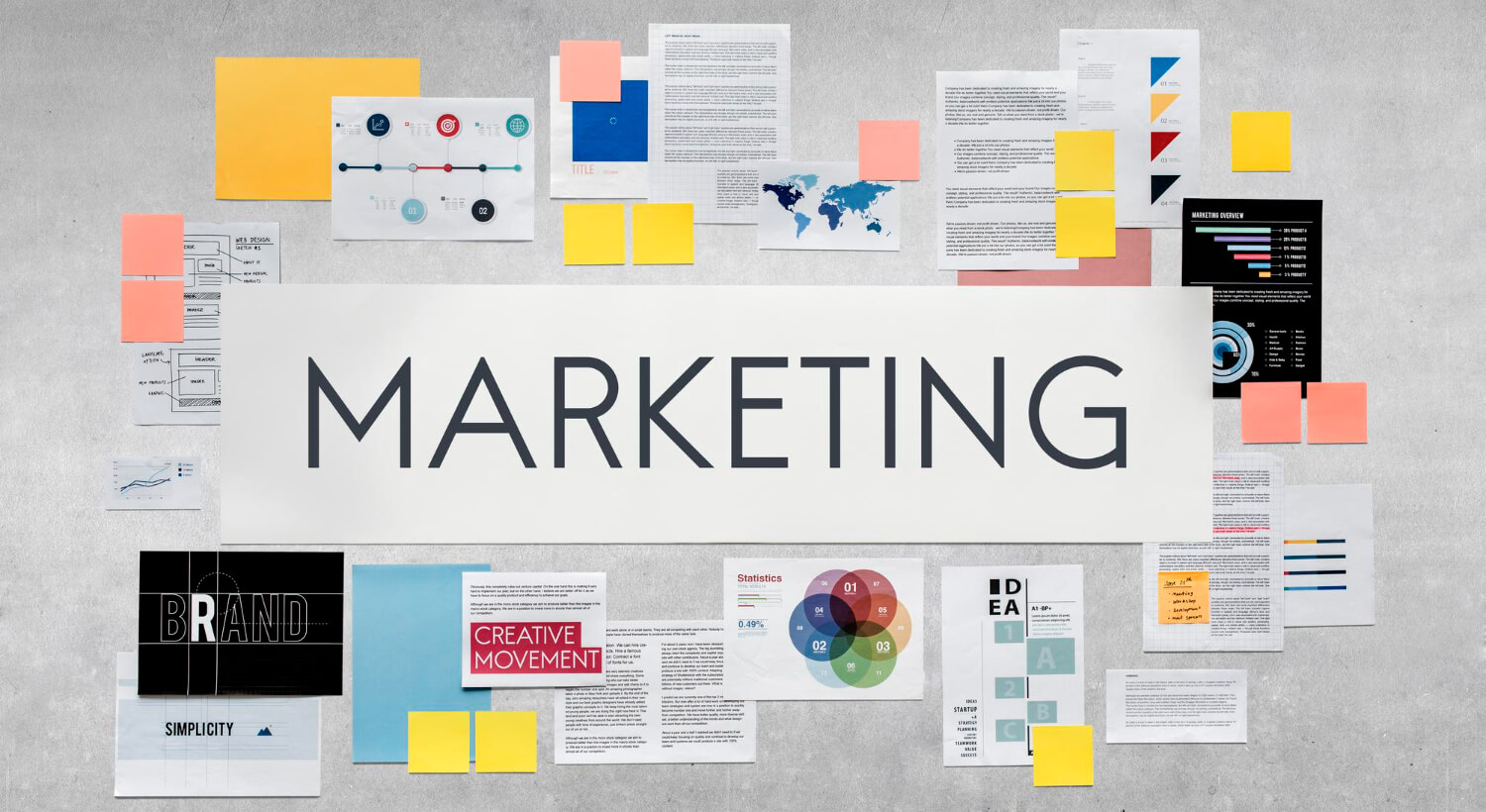All About Business Planning: Complete Manual With Updated Extensive Resources
Copyright Carter McNamara, MBA, PhD. NOTE: Your business plan should be highly customized to your current organizational situation. Thus, using a generic business plan template could completely misrepresent the needed focus of your business plan. (This step-by-step manual is a complement to the topic How to Start Your Business.)
Sections of This Topic Include
What is a Business Plan?
Business Planning Right for You Now?
Customize Your Business Plan Document
Get Ready for Writing Your Document
Write Your Business Plan Sections
Using Your Business Plan Document
Extensive Free Business Planning Resources
Also consider
Related Library Topics
WHAT IS A BUSINESS PLAN?
Definition
Wikipedia provides a very useful definition:
- “… business plan is a formal written document containing business
goals, the methods on how these goals can be attained, and the time frame
within which these goals need to be achieved. It also describes the nature
of the business, background information on the organization, the organization’s
financial projections, and the strategies it intends to implement to achieve
the stated targets. In its entirety, this document serves as a road map that
provides direction to the business.”
Same as a Strategic Plan?
Others view a Business Plan to be the same as a Strategic Plan and, thus, use the phrases interchangeably. However, this can be confusing since a Strategic Plan is conventionally interpreted to be a plan that is focused on the entire organization, including to clarify its purpose and priories and how those priorities will be addressed over a specific time. A Strategic Plan could have several associated and small plans, for example, an Implementation Plan, Financial Plan and Staffing Plan.
Others view the financial information in an overall Strategic Plan to be a business plan. However, this view can be confusing for the same reason as interpreting a Business Plan and Strategic Plan to be the same.
Also consider these articles to more carefully prepare for your business planning
Reasons for Business Planning
Numerous Reasons for Business Planning
There are numerous reasons for doing a business plan, including:
- To identify any problems in your plans before you implement those plans.
- To get the commitment and participation of those who will implement the plans, which leads to better business results.
- To establish a roadmap to compare your plans to your results as the venture proceeds from paper to reality.
- To achieve greater profitability in your organization, products and services — all with less work.
- To obtain financing from investors and funders.
- To minimize your risk of failure.
- To update your plans and operations in a changing world.
- To clarify and synchronize your goals and strategies.
Also consider
Do a Strategic Plan Instead?
What is your reason for writing a business plan? If it is to clarify primarily the organization-wide mission and perhaps associated vision and values, then you might be better to follow guidelines for generating a strategic plan. See All About Strategic Planning.
Do a Nonprofit Program Instead?
Are you thinking about starting a new program in your current nonprofit organization? If so, then you might be better to follow guidelines in Basic Guide to Nonprofit Program Design and Marketing.
Starting a Nonprofit Social Enterprise?
A social enterprise is an organization that aims to make a profit that is focused primarily on meeting an unmet social need. If that is your goal, then you might benefit first by reading Social Enterprise and Social Entrepreneurship. After reading that topic, you might return to this topic to help you develop your business plan for your social enterprise.
Start a For-Profit Business?
Are you writing a business plan to start a new for-profit business? If so, then you might benefit most from first reading the manual How to Start a Business. One of the guidelines in that topic is to complete a business plan. Thus, the guidelines in this topic about business plans will be useful for that portion of the manual.
BUSINESS PLANNING RIGHT FOR YOU NOW?
Personally Ready for Business Planning?
Before you write your business plan — and before you start your new business — there are some hard questions that you should first ask yourself. Otherwise, the effort to start and run your new venture is likely to be very challenging, frustrating and perhaps deeply disappointing. So now think about, for example:
- Do you have the traits of a successful entrepreneur? Are you sure?
- What is your primary reason in starting a new business?
- What are your passions that will continue to motivate you in your planning and operating your business?
- What strengths can you build on as you do all of that?
- What about alternatives to starting a new business? Buy a franchise? Buy a business? Start a nonprofit? Start a social enterprise?
- How should you do your planning? How can you keep it realistic and satisfying?
- What sources of free or low-cost help might there be for you now?
Also consider
Your Business Plan Is About You
You Have a Viable Business Idea?
Many people start planning a business because they are personally convinced that their idea will generate a profit. Unfortunately, these people usually end up confused and frustrated while trying to sell a product or service that few people want to pay for. So before writing your business plan, make sure that your idea is a viable one that is very likely to:
- Be in high enough demand by potential customers
- That they are willing to pay enough money for it,
- That the revenue from those sales will consistently
- Exceed what it costs to develop and provide the product or service.
Read: What is Your Business Idea and Is It a Viable Business Idea? The guidelines and resources in those two topics will help you to feel much more confident that a business plan is a very good idea for you to write now.
Principles for Business Planning and Staying Sane
It can seem daunting to write a business plan. However, here are some guidelines to help you to get the most out of the experience of writing your business plan.
- Realize that you’ve already done a lot of planning in your life. Think about what worked before. What didn’t? What can you improve this time?
- Do the planning one step at a time. It’s better to do slow high-quality planning than to rush to get a plan document done. Your planning will take as long as it takes.
- Start simple, but start. Don’t wait for the perfect time.
- The planning does not have to be perfect the first time. You can change it as needed.
- It’s your business that you are planning. Start with your own ideas first, then polish them with someone else’s.
- Do the first 20% of planning that produces the first 80% of results. First, plan the big chunks. Then, add details in the next round of planning.
- Give yourself credit as you keep adding to your plan.
Avoid the Most Common Mistakes
Before you begin more planning and writing, consider the most common mistakes that occur during business planning. If you follow the guidelines on this topic in the Library, then you will avoid the most common mistakes.
CUSTOMIZE YOUR BUSINESS PLAN DOCUMENT
Factors That Determine the Design of Your Business Plan
It can be a big mistake to merely choose a sample business plan or business plan template and then begin modifying it to create your own. There are wide variety of different types and designs of business plans. Your choice should be based on a variety of factors that are explained in this section. If you customize your own business plan, it will be much more useful to you — especially if you do the planning and customizing yourself.
As you read the information in this section about the various types of business plans, be thinking about which types most closely match your thoughts about your own planning. The structure and contents of your business plan depend on a variety of factors, including:
- What is the overall purpose of your plan?
- What types of audiences are your plan intended for?
- Which types of business planning formats do you prefer?
- What is the organizational situation to be addressed by your plan?
- Which organizational levels are primarily involved in the plan?
Which Overall Purpose?
Which of the two purposes in the following table is the primary purpose of your plan? Generally, the content of a plan to seek funding often includes more information about the company, its management team and its financials than a plan to be used primarily as an internal management tool. Also, the tool usually has much more information about tactical details, such as objectives, timelines and responsibilities.
|
Audience
|
Typical Purpose
|
Seeking funding and/or other types
of assistance |
This type of business plan is designed to persuade investors
from outside or inside the organization to provide funds and/or other
forms of assistance to pursue a new opportunity. |
Management tools (see Note
below) |
This type is designed as a road map for internal executives,
managers, supervisors and employees involved in achieving certain goals
in the organization. This type is useful to guide the development, communication
and implementation of the goals, as well as their report their status. |
Which Type of Audience?
Which of the two types of audiences in the following table is your plan intended for? Generally, the differences in a business plan for each of the two audiences is similar to the differences in plans seeking funding versus to those to be used as management tools.
|
Audience
|
Description
|
Outside/external
stakeholders |
For example, banks, individual investors and venture
capitalists |
| Internal stakeholders |
For example, executives, other departments and other
internal cost centers |
Which Type of Organizational Situation?
Which of the following four types of situations applies most to your business planning. The types will significantly determine the nature of the content in your plan.
|
Situation
|
Description
|
| Startup |
Usually applies to starting a new organization. Often
written to external investors, e.g., investment firms, venture capitalists
and banks. |
| Growth |
Usually applies to starting a new product or service. Might
be written to external or internal stakeholders. |
| Expansion |
Usually applies to expanding a current product or service.
Written especially to inside stakeholders, for example, Board of Directors
and management. |
| Feasibility |
Usually applies to exploring a possible market opportunity.
Focused especially on getting funding for further research to verify if
the opportunity could be a viable business opportunity. Written to external
or internal stakeholders. |
The Guidelines for Specific Types of Plans section of this document includes links to samples of each of the four situations for business plans.
Which Organizational Level?
Which of the following four organizational levels does your business planning apply to? Especially if your business plan is to be used as an internal management tool, then it helps to know the primary level that is the focus on your plan. That, in turn, will help you identify who should be involved in the planning and the type of wording to use in the plan.
|
Level
|
Typical Focus
|
| Strategic |
Focused on organization-wide mission and priorities,
including strategies and goals (sometimes used referred to as strategic
plans and vice versa) |
| Tactical |
Focused on the next level of detail (goals, objectives,
timelines, responsibilities) to implement a strategic business plan |
| Product, Service or Program |
Focused on goals, objectives, timelines and responsibilities
to develop and deliver a certain product, service or program (also referred
to as product, service or program plans) |
| Operational |
Focused on the goals, objectives, timelines and responsibilities
to implement the first year of a strategic business plan (also referred
to as an annual plan) |
Also consider these overviews of different types of business plans
Which Type of Business Planning Format?
Traditional Format
This format is used especially when writing to external stakeholders. Internally focused plans usually need much less information about the company and management than externally focused plans.
Thus, the traditional format is a very comprehensive and detailed plan that is very likely to tell the full story of the planners’ purpose in writing the business plan, and what they fully intend to do if the plan’s audience chooses to support the plan and its implementation.
Lean Format for Internal Stakeholders
As written by Tim Berry at Bplans, “A lean business plan does what every business owner and aspiring startup needs to manage strategy, tactics, execution, and essential business numbers. It exists for internal management, not for outsiders. It stays lean and simple with just bullet points for essentials and a collection of lists and tables. It should be reviewed and revised at least monthly so it stays fresh.”
Berrry adds, “Lean business planning starts with a lean business plan. The lean plan contains four essentials every business needs, and nothing else. It’s a streamlined core plan for running the business, not a document or detailed plan, full of descriptions, to be presented to investors or lenders. It’s to optimize management.”
One-Page Format
The one-page format is useful when the audience of the plan already knows about your organization and its management or the audience has has requested a one-page format.
(A well written Executive Summary used in a traditional format is essentially a one- or two-page business planning format.)
Comparison of Common Business Planning Formats
|
Format
|
Typical Contents
|
| Traditional (Standard) Format |
Executive Summary, Company Overview, Product or Service,
Market Opportunity, Marketing and Sales Plans, Management Team, Implementation
Plan, Financials and Appendices |
Lean Planning Format (from
What’s a
Lean Business Plan?) |
Strategy (who you are, what you do and for whom); Tactics
(marketing, offering, financials); Assumptions, Milestones, Metrics and
Schedule (review schedule, list assumptions, milestones, metrics); Forecasts
of Sales, Costs, Expenses and Cash |
One-Page Format (from How
to Write a Business Plan on Just One Page) |
Description of the Problem, Your Solution, Business Model,
Target Market, Competitive Advantage, Management Team, Financial Summary,
Funding Required |
Also consider these articles about the above formats:
What Type of Business Plan You Will Need?
From having read the section Factors That Determine the Design of Your Business Plan, answer the following questions:
What is the Primary Purpose of Your Plan?
- To seek funding or use as a management tool?
- If it’s funding, then from an external or internal source?
Who is the Primary Type of Audience?
- External or internal stakeholders?
- Then what does your choice mean in terms of components in your plan, for example, information about the company overview, management team and financials?
What is the Primary Organizational Situation?
- Start-up? Growth? Expansion? Feasibility?
- Then what does your choice mean about the content to include in your plan?
What is the Primary Organizational Level?
- Strategic? Tactical? Product, service or program? Operational?
- When what does your choice mean in terms of involvement in the planning?
Language to use in your plan?
Which Type of Business Planning Format?
- Traditional, Lean planning or One-Page?
- Why did you select that format? What are advantages and disadvantages of that format?
NOTE: If you already have some potential funders in mind, then you would benefit from asking them if they prefer a certain format of business plan.
GET READY FOR PLANNING AND WRITING
Polish Your Basic Skills in Writing and Planning?
Review Best Practices in Writing?
One of the quickest ways for your business plan to lose its credibility is when the writing is fraught with misspellings and grammatical errors or is poorly organized. So it might be wise for you to review some basics in good writing skills. Consider topics, such as: Vocabulary | Spelling | Grammar | Planning and Organizing Your Writing | Formatting Writing | Writing for Readability
Review Best Practices in Planning?
There are some core best practices and skills that are required in any kind of planning, including business planning. Do a quick review of that information before writing your business plan.
Read: How to Do Planning
Guidelines for Customizing Content to Your Audiences
Here are more guidelines to help you ensure that your business plan will be suitable to the nature and needs of your readers. The more they feel that you indeed understand what they prefer in a written document, the more they will appreciate you and your judgment.
- The style of the content in your plan should match the style most familiar to your preferred audiences. For example, if your plan is intended for external audiences, then use a more formal style of writing, including to define any terms and acronyms that are specific to your organization.
- Whether formal or informal, write your content so that it captures and retains the attention of your readers. For example, include adjectives that describe your conclusions, but put the background information in an appendix.
- Write the answers to the questions they are most likely to have, for example, “Why Will This Be a Winning Business?”
- Write in an assertive style, for example, “will be” instead of “hopes to be” and “will satisfy” instead of “will try to satisfy.”
- The trend in business plans is to make them shorter, for example, 6-8 pages for a traditional format and even shorter for the Lean format.
- Include text and images to help your readers to quickly grasp and synthesize the information in the plan.
- Always – always — have someone else review the plan before you present it to your audiences. Encourage your reviewers to be highly critical regarding the plan’s accessibility, format, readability, grammar and spelling, and usefulness.
Should You Get Help?
Should You Use Samples and Templates?
Be Sure They Match Your Type of Plan
If you have carefully considered the above-mentioned factors in customizing your business plan, then you might look at a variety of samples and templates to consider. There is a vast range of samples of actual business plans and templates to use to write your own plan. There also are numerous software tools to guide you to complete your own plan.
When considering samples, templates and software tools, be sure they would guide you to develop a business plan that actually matches the purpose of your plan, its intended audiences, your organization’s current situation and the preferred format of your plan.
Advantages of Samples and Templates
Advantages of samples of plans and templates include that they can help you to:
- Quickly get a sense of the types of content and formats of business plans.
- Quickly get started, rather than staring at a blank sheet of paper.
- Quickly organize your ideas and current information.
- Reduce any confusion and anxiety about the idea of writing a business plan.
Disadvantages of Samples and Templates
Disadvantages include that they can sometimes cause you to:
- Focus far too much on just getting the document done, rather than the most important — the actually planning.
- Conform your planning to the format of the sample, rather than to type of business plan that is best for you.
The disadvantages can be overcome if you carefully select the best ones that match the type of business plan that you have decided that you need.
There are numerous Samples Plans and Sample Templates near the end of this document.
Should You Hire Help?
Advantages and disadvantages of hiring a professional to help you are somewhat similar to those of using samples and templates.
Write It Yourself?
An obvious benefit of writing it yourself is that there is no cost to you. This might work for you, especially if:
- Your intentions are for a rather simple organization, for example, to provide one type of product or service that requires little development.
- You already have strong expertise in the industry and business model of your intended business.
- You are highly self-motivated to work your way through each step in customizing and writing your plan.
- You already know a great deal about the proposed product or service and its intended customers. That will be very useful if and when others ask you about your plan.
You should seriously consider hiring help if:
- You are planning a business with a rather complex product or service, about which you have very little expertise.
- You have little confidence that you can actually complete your own business plan.
- You need a business plan document quite quickly, and are willing to risk that it might not exactly suit the best type of format for your purpose.
- You have the funds to pay a professional.
Hire a Professional?
A good business writing professional should help you to customize your business planning, rather than limiting you to the particular template that they prefer. As with hiring any type of professional assistance, you should:
- Write your requirements regarding the type of plan that you want, how you prefer to work with the professional, and timing to complete the plan.
- Ask for recommendations from your friends, co-workers and any start-up businesses that you know about.
- Get references from any professionals who apply to work with you.
Read:
How to Translate Between For-Profit and Nonprofit Plans
Nonprofits are being encouraged to start social enterprises that aim primarily to make a profit that is spent on meeting a strong, unmet social need. Social enterprises require a business plan for the new product or service that they are considering.
When reviewing samples of business plans, realize that there are many similarities between for-profit and nonprofit business plans, even though the phrase “business plan” is usually associated with a for-profit organization. Some of the terms are different, but in most cases, the words in a for-profit business plan can be readily translated into words more commonly associated with nonprofits. See Different Names for Similar Concepts.
NOW WRITE YOUR BUSINESS PLAN
Description of This Topic’s Sections
The following descriptions of the sections in a business plan are typical of the traditional, or standard, business plan format. However, the particular sections in your business plan, including their content and their order, should be based on the type of business plan that you had selected from following the previous guidelines in this Library topic. Still, the contents of various sections can be useful to you regardless of the type of business plan that you choose.
As you read articles by other authors, you will notice that they might suggest slightly different sections and perhaps in a different order. However, they usually suggest that the same types of information end up somewhere in your plan, depending on your type of business plan.
Section – Title Page
Your title page should include:
- Name of your organization
- Branding information (for example, the company’s logo and colors)
- Purpose of the plan (for example, to seek funding, start an organization, grow the organization, to start a new product or service)
- Date of the plan (this is useful especially to track the version of the plan)
- Terms of confidentiality (for example, if it is not to be shared outside of the company)
- Contact information (for people to use if they have questions about the plan)
- Copyright terms (for example, that it is not to be copied, distributed or modified without express permission of someone in the organization)
Read:
Section – Executive Summary
Guidelines
The Executive Summary is the most important section in the plan. It is a summary of the highlights in the entire plan. It is not a narrative table of contents.
The Summary is often what your audiences will first read. Audiences might read only the Summary, so it is important that all of the highlights be included and well organized into it. Many people consider the Summary to be a “mini-business plan.”
Imagine a member of your audience, for example, an investor taking 5-10 minutes to read your plan, then ask yourself, “How much content should be in the Summary?”. It should be 1-2 pages at most.
Because the Summary includes the highlights from your plan, you should probably write the Summary last. However, some prefer to write it first as a means to quickly gather their most important thoughts about the plan.
Because the Summary needs to be so well-written and organized, you should outline the Summary into reasonable and titled categories. Make the Summary easy to quickly understand and synthesize. See Get Ready for the Activity of Writing.
Read your Summary aloud to another person. Ask them to feel free to interrupt and share their reactions and suggestions.
The Summary should include concise, but powerful, descriptions of, for example:
- Purpose of the plan (to get funding or as an internal management tool)
- Organization’s mission (or statement of purpose) – its purpose, whom it serves and for what benefits to them
- Market opportunity (the needs of which target markets of customers that you aim to meet)
- Product or service (including how it will meet the needs of the target markets)
- Competitive advantage (listing of direct and indirect competitors and why target markets will buy from you instead)
- Marketing and sales plans (how you will appeal to the unique needs of each target market)
- Management expertise (how current and future expertise is very relevant to producing and providing the product or service)
- Implementation plan (your specific goals and objectives during each year of the plan)
- Financial highlights (forecasts of sales and profits, balance sheet, and cash flow projections)
Sample Executive Summaries
Also Consider
Section – Market Opportunity (Market Analysis)
Suggested Pre-Reading
This section can seem like a lot of research to do. However, this article How to Conduct Market Research includes basic descriptions of the various methods to do market research, as well as common sources of market information and of help.
Guidelines
The description of the market opportunity is all about credibility — about convincing your readers that your conclusions about the market opportunity have been verified and substantiated through actual market research (market analysis), rather than just your strong opinions.
The extent of your analysis depends on how well you actually know your product or service and its markets now. For example, if your plan is for a new, small business and you can prove that you already know your product or service and its customers very well, then your opinions will be very credible to include.
This section should answer the following types of questions. These are the kinds of questions you should be asking yourself anyway while managing your business. (After each question, also ask yourself “How do we know?”)
- Potential target markets — What new groups (target markets) of customers might you serve? For example, groups by age, gender, education level, income level, occupation or location? What are the needs — or problems — of each group? How will our product or service meet those needs or solve that problem?
- Target markets’ demands – What is the size of each of the target markets and is each growing or declining? What is the likelihood of each target market’s demand (for our product or service) to increase? For example, what affects on them might there be from technological developments, rules and regulations, economic changes and global competition?
- Competitors – Who are the direct competitors in each target market, that is, those who already sell the same product or service and perhaps to the same target markets? What are the indirect competitors, that is, influences that will decrease the demand for your product or service? What are the strengths and weaknesses of each direct competitor? How can you differentiate or position yourself from each competitor?
- Selected target markets – Which target markets should you pursue and in which order? Are there certain types of customers in that market to pursue, for example, by gender, age or otherwise? What is the percentage of that type in each target market?
- Pricing – What is the median income of each selected market? What will each selected target market pay for our product or service? What pricing arrangements (structures) should you offer each?
- Selling – How does each selected target market prefer to communicate, for example, via in-person or Web-based appeals, written advertisements or videos? How should you appeal to (sell to) the selected target markets?
- Barriers to entry – What influences might become obstacles to your success in each selected target market? For example, think of influences in the economy, changing demographics or social norms, or technological changes. How might you overcome them?
- Goals for target markets – For each selected target market, what percentage do you plan to sell to over the coming year?
It might be useful when thinking about each selected target market, to write a profile, or persona, of the ideal customer in that target market. That persona can be a useful representation of that target market, for example, when thinking about their needs or problems, how those needs might be met, and how best to communicate with them.
Sample Descriptions of Market Opportunities
Also Consider
Section – Description of Product or Service
Guidelines
The type of information in this section depends on whether you are selling a product or service. The former often requires brief descriptions of logistics, including how you will get and store the necessary resources. It helps to include pictures where appropriate. Write this section as if it were being read by your customers.
Here especially is where you need to be careful about not referring to terms that your particular audience might not understand. Also, be careful about making exaggerations, such as “ensure continued joy throughout their lifetimes” or “will instantly generate sales more than competitors”. This section answers the following types of questions.
- Product or service – What is the primary product or service that you plan to sell? What industry is it in? Is it busier in certain seasons than in others? Describe it in terms that customers will understand.
- Pricing strategy – How will you price it? That depends on your pricing strategy, for example, is it to quickly get into new markets by offering low prices? Or is it to convey high-quality by charging slightly more than your competitors?
- Differentiating from competitors – How does your product stand out from competitors? Do a comparison of products and services with yours. Think of unique benefits, such as pricing, access to the product or service, and its ease of use, high quality and strong customer service, special guarantees and warranties, and refund arrangements.
- Prepare for customer demand – How will you manage the demand of customers? If yours is a product, then you need to ensure sufficient supplies to continue to manufacture that product. If yours is a service, then you need to ensure sufficient expertise to continue to provide it.
- Manage for sufficient supplies – How will you ensure sufficient supplies of resources? If you do not have sufficient supplies, then customer orders will dry up very quickly.
- Manage storage of supplies – How can you manage the supplies during storage to ensure their count and high quality?
- Order fulfillment – Describe how customer orders will be received and filled. For example, will you receive them directly or via retail outlets? Will you deliver the product or service in-person or online?
- Risk management – What liabilities might there be in how customers receive and use the product or service? How can you avoid or respond to them as they occur?
Sample Descriptions
Also Consider
Section – Marketing and Sales Plans
The intent of this section in your plan is to explain how you plan to present your product or service to its desired customers in each target market and to help them understand the value of the product or service.
Marketing Plan
Your marketing plan describes your marketing strategy. The strategy describes the product or service you are offering, its pricing structures, the best promotions to use and how it will be distributed — or delivered — to its customers.
Unique Value Proposition
Your unique value proposition concisely conveys the unique benefits that your customers get from using your product or service. It is about what happens to your customers, the changes that occur to them. It is your core marketing message — your “elevator pitch” — to convey to potential customers.
Branding
To effectively promote your organization, product or service, you need to cultivate a strong reputation and personality, or brand, for it. The brand can include associating a unique image (or logo) and set of colors, as well as a set of values. Here is where you describe your branding for your organization, product or service.
Pricing Strategy
Here is where you explain your pricing strategy — how to achieve the ultimate benefit to the business from the pricing that you select. Examples of pricing strategies include:
- Penetration pricing – a low-cost approach intended to quickly penetrate new markets
- Premium pricing – intended to imply the high-quality of your product or service
- Price bundling – offering a deal if customers purchase, for example, two or more of the product or a maintenance contract for a service
- New customer pricing – offering a low initial price in order to first establish a relationship with the customer
Read:
Types of Promotions to Use
In this section, you describe the types of advertising and promotions that you intend to use with each target market, based on the nature and needs of each (as you learned during your market research). It is often best to depict your plan with a table of rows and columns.
About marketing plans:
Sales Plan
This section of your business plan describes your sales strategy, which is the approach you have designed to powerfully describe your products and services to your current and potential customers, so that they appreciate their benefits to them and thus, are more inclined to purchase them from you. Associated methods include:
- Generating leads, or contact information about potential customers
- Qualifying prospects, that is, deciding which leads are most likely to become customers
- Contacting them via communication channels that are most suitable to them and effectively describing, or pitching, the product or service to them
- Proposing how the potential customer could best purchase the product or service
- Closing the sale, that is, getting formal agreement from the potential customer to buy the product or service
- Ensuring follow-up account management and recordkeeping activities
About sales strategies and plans
Section – Organizational / Company Overview
Guidelines
Readers of this section are most often interested in descriptions of:
- Mission statement (or statement of purpose) — the purpose of your overall organization, whom it generally serves and how
- Current or planned legal structure of the business, especially who owns it, for example, sole proprietorship, partnership, S or C corporation or limited liability company
- How the business is to be obtained, for example, starting a new business, buying a business or buying a franchise
- Type of industry, for example, construction, computers, education or manufacturing
- Highlights of history, including founders, major changes and successes
- Business model, that is, how you will make a profit
- Core competencies — what the business does very well
- Location and why it was selected
- Supply chain activities, that is, how products and services are developed and delivered
- Strategic priorities for the next three to five years
Sample Overviews
Also Consider
Management Expertise
Guidelines
Investors believe the quality of the business’s management is as important — or more — than the viability of the business idea itself.
This section of your plan is to describe how the expertise in your management staff are fully equipped — or soon will be — to cost-effectively develop and deliver your product or service. In this section concisely describe:
- The expertise needed to cost-effectively develop and deliver the product or service.
- How the leader of the management team has that expertise. Or, if that expertise is not currently in the management team, then how you can promptly get it.
- Other relevant experience, degrees and certifications.
- Include resumes if useful, but focus on skills at least as much as useful credentials.
- Specify any financial interest or ownership of each manager.
- An organizational chart that depicts how the management team is organized, as well as a description of how the effectiveness of the team will be managed.
- If the business is a corporation, then provide brief experience about each of the members of the Board of Directors, his or her relevance to the product or service and each member’s financial interest in the business, if applicable.
- Any relevant and involved collaborators, strategic alliances and/or professionals who will be involved in the business activities.
- End by explaining the staffing (personnel) needs that you expect over the first year of the business as it gets started and continues to expand.
- The labor (compensation) costs for all personnel. It can be top level information here, but should be detailed in the financial section of your business plan.
Sample Management Section
Also Consider
Section – Implementation (Execution) Plans
Guidelines
The implementation (or action planning) section ties together what you hope to accomplish from an integration of the previous sections in the business plan. In a complete implementation plan, your hopes are specified in terms of desired goals (or milestones) and the associated objectives, responsibilities, timelines and resources needed to achieve each objective.
If your business plan is for a startup business, then typical goals include those in the numbered list in the article How to Start a Business. If your business plan is for growing your business, then goals to consider are those needed to evolve your business to the next life cycle of development.
Even if your business plan is only to get funding from investors, you should regularly reference this section as a management tool to ensure that your plans are being implemented as needed for the sake of your business and its customers.
Similar to your business plan, the implementation plan does not need to be perfect. It is like a living, breathing document. You can change it as necessary.
Sample Implementation Section
Also Consider
Component – Financials
Guidelines
If this topic is not a strong skill of yours and you feel anxious, then you can calm down. There’s lots of immediately available and very practical help.
The financials section is where you show that your business idea can make a profit. If you are using your business plan to request funding, then this is the section that explains how you derived the amount of your request.
The types of financial information that you include in your business plan depend on the type of business plan that you selected from having reviewed the guidelines in the section Factors That Determine the Design of Your Business Plan. However, there are three types of important financial plans to include in any type of business plan:
- Profit and Loss Statement (Income Statement) – This statement depicts an organization’s actual revenue and expenses and, thus, its profits.
- Balance Sheet – This statement depicts an organization’s actual worth by subtracting its liabilities and owner’s equity from its assets.
- Cash Flow Projection – This statement depicts the cash flow in and out of the organization and, thus, whether it has cash to pay its immediate expenses.
If you do not have skills in financial planning — and even if you do — then this is a section where it is handy to use templates to do the above three plans. They can efficiently guide you to provide the right kinds of information and then organize that information into useful reports.
Sample Financial Templates
Also Consider
Funding Request / Proposal
If the purpose of your business plan is to request funding, then you will want to add this component to your business plan. Your request might be going to an outside source, such as an investor or lender. Or, it might be going to an internal funder, such as an executive department that is being asked to fund a proposal for a new and significant venture within the organization.
A good funding request is similar to a well written Executive Summary. Some investors might skip right to this component of your business plan and read only that component.
In your funding request, include:
- Cover letter that specifies the purpose of your request for funding and what you want from the particular investor or lender who is reading your funding request.
- Overview of your business, including at least its mission, legal structure, what you sell and to whom. (See the recommended contents for this information in an Executive Summary.) Mention the expertise of your management team.
- Your strategic priorities for at least the next three years, for example, to grow by a certain percentage, expand certain products or services, sell the business or merge with another business.
- Your financial statements for the past three years or since you’ve been operating if it’s been less than three years. Ideally, your statements were audited.
- Business’s projected funding requirements over the next three years. For the first year, specify funds for each quarter of that year.
- How you will use the funding, for example, marketing, payroll, inventory, supplies, computers, etc. Mention your personal investment, if applicable.
- Your preferred funding terms, for example, a loan or lump sum. If a loan, then preferred terms, such as preferred interest rate and preferred pay-back period. Also, specify what collateral you are offering.
Component – Appendices
Guidelines
In your appendices, include the materials that will further explain and justify the opinions, conclusions and decisions that you included in the body of your plan. Examples include:
- Board of Directors indication of approval of the business plan
- Certifications and awards
- Historical financial information
- Letters of testimonials
- Personal financial information
- Reference letters
- Resumes
Also Consider
USING YOUR BUSINESS PLAN
Evaluating Your Business Plan
So far, your business plan probably includes only your own ideas and writings. Now it will be useful to get some idea of how others analyze and evaluate the quality of the plan. It is easy, when thinking about the various deep details in your planning, to miss a few very obvious points to make in the plan. Despite what you might think is most important in your plan, you might be amazed at what others think.
Presenting Your Business Plan
After you are satisfied with your business plan, you will want to present it to your primary audiences, whether they are external (for example, bankers and investors) or internal to your business (for example, Board members and the Chief Executive Officer).
The design and style of your presentation are critical to the success of all of your hard work to date. Here are various guidelines and words of wisdom to ensure your presentation is very successful.
How to Ensure Your Business Plan is Implemented
There are various practices that you can do to ensure your plan is implemented. For example, think of who will be involved in implementing your plan and then be sure to involve them in helping to write it or at least to review it.
Be sure the business plan document includes a section about milestones or specific goals, each of which is associated with objectives, well as the responsibilities and timelines to achieve each objective.
Translate the plan’s goals into relevant job descriptions that are reviewed before official performance appraisals. Be sure that, even if a team is responsible to achieve a certain goal, that ultimately there is one person who is accountable for the team’s progress in achieving the goal.
Schedule regular reviews of the status of the achievement of the goals. If a milestone is behind schedule, then consider if the problem is that the goal is unrealistic, more resources are needed or deadlines should be extended.
Reviewing and Update Your Plan
You should review the information in your business plan to be sure that it is up to date. The frequency of how often you review and update it depends on its purpose. For example, if you are using it as a management tool, then you might review it quarterly. In contrast, if its primary purpose is to seek funding and you were successful in getting that funding, then an annual update might be appropriate in case you use a business plan to seek funding in the future.
When reviewing the plan, compare the current revision of the plan to the previous, and ask yourself the following types of questions:
- What is the primary purpose of the plan today?
- Have the development and provision of our products or services changed significantly?
- Have our customers and target markets changed significantly?
- How accurate were our sales and profit forecasts compared to the actual sales and profits? What new forecasts should we put in the plan?
- How well are we doing in managing our cash flow?
- How are we doing in achieving the goals listed in the plan?
- What changes should we make to the goals so they are more up to date?
- How can we achieve the goals even more effectively, for example, get more resources, extend deadlines or reduce the number of goals to be more realistic?
Read:
How to Change Your Business Plan Document
The first approved version of a business plan is rarely implemented as it was originally written. Usually conditions change, requiring a change in the contents of the plan. For example, market conditions change. New competitors arise. Sales and financial forecasts prove to be wrong.
If you were wise enough to also use your business plan as a management tool, then you know how important it is that the plan remains up to date. Thus, it is important to carefully change your plan.
Extensive Free Business Planning Resources
Sections of Resources Include the Following
General Guidelines
For-Profit / Nonprofit Guidelines
The following articles explain the overall business planning process. Be sure you select guidelines that help you to customize your business plan according to the type that you selected by following guidelines in this Library topic.
Nonprofit-Specific Guidelines
The following articles include guidelines to develop a business plan for a nonprofit organization.
Guidelines for Specific Types of Plans
StartUp Plans
Growth Plans
Expansion Plans
Feasibility Plans
Reviews of Business Planning Software
Be sure that the software that you select actually guides you through the business planning – the actual thinking – that goes into a very useful and well-designed business plan. The planning (the journey) is more important than the plan (the map).
Samples Plans
For-Profit / Nonprofit Sample Plans
In the following, the business plans are organized by the type of industry, product and/or service.
Nonprofit-Specific Sample Plans
Sample Templates
Sample For-Profit / Nonprofit Templates
Nonprofit-Specific Sample Templates
Business Plan Glossaries
Learn More in the Library’s Blogs Related to This Topic
In addition to the articles on this current page, also see the following blogs that have posts related to this topic. Scan down the blog’s page to see various posts. Also see the section “Recent Blog Posts” in the sidebar of the blog or click on “next” near the bottom of a post in the blog. The blog also links to numerous free related resources.
For the Category of Business Planning:
To round out your knowledge of this Library topic, you may want to review some related topics, available from the link below. Each of the related topics includes free, online resources.
Also, scan the Recommended Books listed below. They have been selected for their relevance and highly practical nature.









